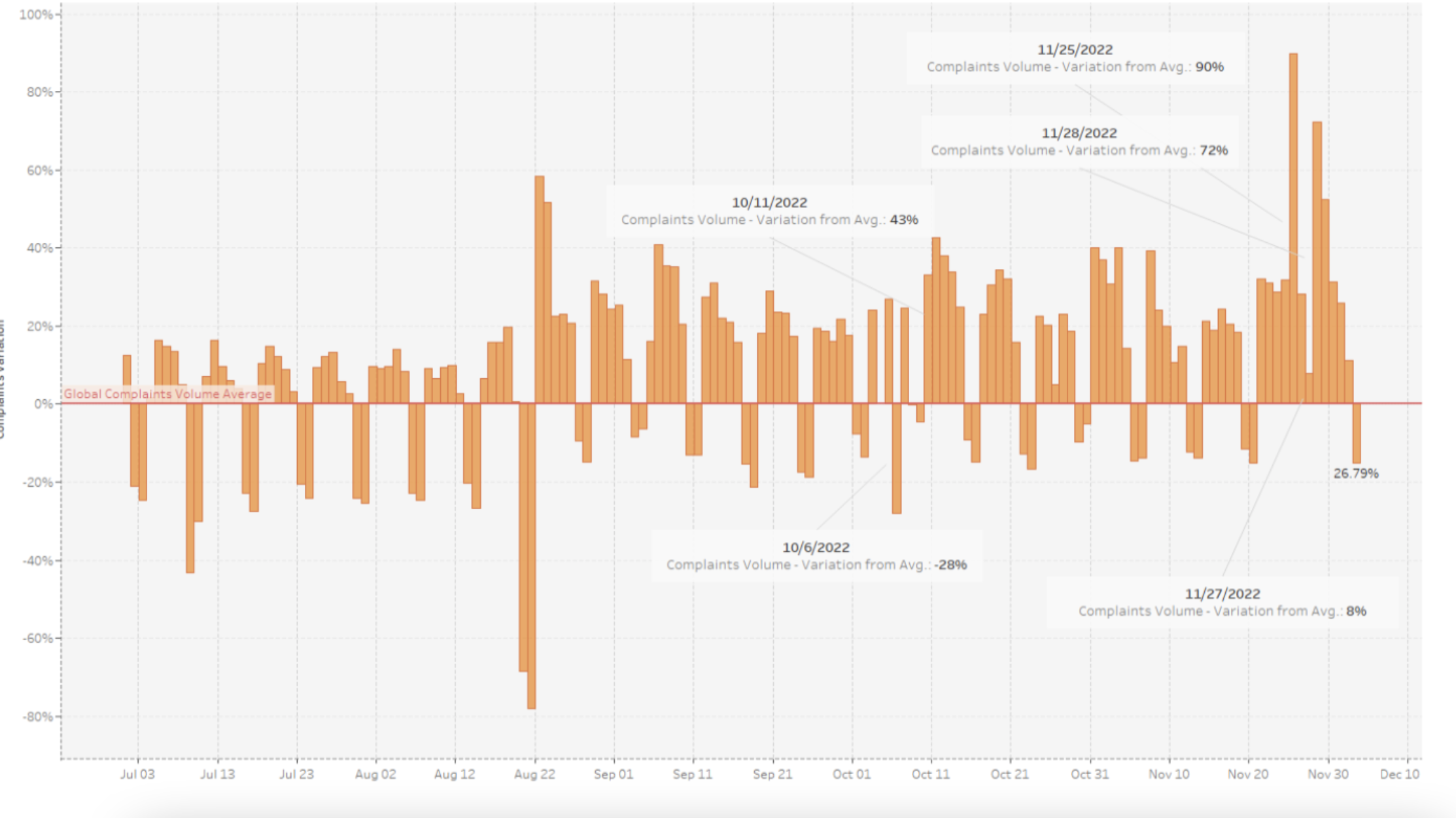Email Marketing
Black Friday Email Breakdown: What Happened and What it Means for Senders in 2023
minute read

It’s official: Black Friday and Cyber Monday sales set records for online retailers again in 2022!
Total online U.S. sales from Thanksgiving through Cyber Monday reached $67.5 billion, a nine percent increase from last year, according to Salesforce.
This is great news, especially given many early predictions that sales may be lackluster this year amid recession fears and inflation concerns. According to a Gartner Marketing Survey, 28 percent of consumers were initially planning to spend less this holiday season.
Amid these early predictions and economic conditions, email data from this year’s Black Friday weekend suggests email marketers felt pressured to send more emails and lean more heavily on promotions and discounts to drive sales this year.
Let’s take a look at what happened this Black Friday weekend and how marketers should use these findings to shape their email strategies in 2023.
More emails, more complaints?
Starting in late October and early November, we saw measurable increases in sending volume with a consistent upward trend, according to Validity’s global data network.
And unsurprisingly, we saw global sending volumes reach all-time highs on both Black Friday (November 25th) and Cyber Monday (November 28th).
Global email volume trend (variance from average)

While those spikes in email volume may have helped drive positive sales, we also need to consider the consequences for email senders from a deliverability standpoint. Unsurprisingly, along with more email volume we saw more complaints (or subscribers marking messages as junk/spam).
In general, complaint volume was consistent leading up to the holiday, but then showed an even larger variance spike on Black Friday and Cyber Monday than what we saw with the volume trends.
Basically, we saw that sending more email means you’ll be generating more complaints—which will hurt your ability to reach inboxes.
Remember, complaints are a strong signal to mailbox providers that your subscribers may not want all the extra email content in their inboxes, which in turn harms your sender reputation.
Senders who might feel compelled to mail to their entire database to hit certain revenue targets quickly need to remember to play the long game by staying in good standing with mailbox providers.
Global complaint volume trends (variance from average)
Brands are leaning more heavily on promotions
The MailCharts database revealed another interesting trend: Brands are focusing more on promotionally driven content than ever before.
If we look at a year-over-year comparison to 2021, the number of promotional emails was higher in 2022 across most industries, with even higher spikes on both Black Friday and Cyber Monday.
Perhaps one of the more surprising finds was the Food and Drink industry group, which saw a jump of nine percentage points over the Black Friday/Cyber Monday week from the previous year.
Traditionally we expect to see online retailers push hard with holiday promotions, but it’s becoming much more prevalent for even restaurants (and other industries) to take advantage of Black Friday and Cyber Monday sales tactics as well.
Food & Drink: YoY comparison of the average promotional rate
(Note: ‘Promotional Rate’ is the number of emails sent containing promotional content out of all emails sent.)

The Travel and Tourism industry group also stood out, with an increase of eight percentage points in promotional content sent on Black Friday in 2022 versus 2021.
The use of the terms “Black Friday” and “Cyber Monday” in email is also expanding. It’s not uncommon to see a few early promotions in April and May, with subject lines like “Check out these Black Friday prices” or “Deals as low as Black Friday.” And in July, many different brands promote “Black Friday in July” sales.
Then in August we see “Summer Black Friday,” in September it’s “Black Friday of Fall,” in October it’s “Early Black Friday,” and in November it’s game on!
While “Cyber Monday” promotions are not as prevalent during other times of the year, some brands do use phrases like “Cyber Spring,” and mentions pick up significantly starting in October.
With more and more brands using “Black Friday” and “Cyber Monday” keywords to help drive sales on a year-round basis, when will it become tiresome and lose its luster?
To avoid hitting a breaking point with subscribers, make sure you stay in tune with your audience and carefully monitor their reactions to your content and promotions—particularly those offering holiday-style promotions during the off-season.
How should email senders adapt?
Given the expected spikes in send volume and subscriber spam complaints along with an overall emphasis towards more promotional content, senders must pay close attention to subscriber sentiment throughout the remaining holiday season and into 2023. (The peak holiday sales season now lasts through Valentine’s Day for many brands.)
It will be important to watch complaints and unsubscribes as subscribers struggle to deal with the sudden influx of holiday emails. Remember to make opting out easy by featuring the unsubscribe link prominently in your email template—if it isn’t easy to find, subscribers will take the easier course of action, which is to complain.
It’s also critical to watch key deliverability metrics like inbox placement to determine when it might be time to course correct. With the right strategy, increasing your normal sending volume shouldn’t result in a one-way ticket to the spam folder.
To stay on top of more developing email trends and analytics, tune in for our monthly State of Email Live webinar series.
